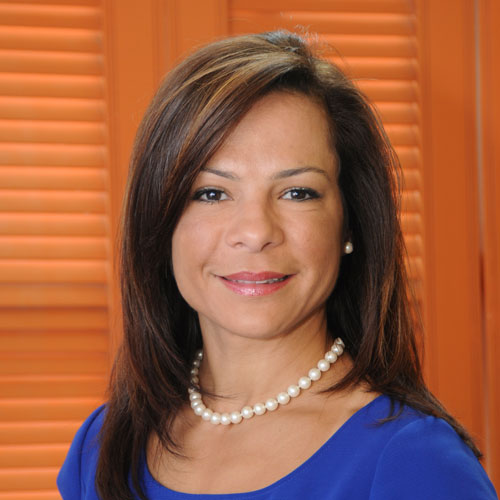Tony Silva is fighting for social change as ICF International’s senior VP of energy communications. Blending conventional communications with social marketing, Silva shares with HE how social media is beginning to show itself as a major ingredient for his cause.
 I started at ICF in 1997. I had been working in public relations in the health-care sector in the Washington, DC, area after I finished graduate school. I saw an opportunity at ICF focusing on the national ENERGY STAR energy efficiency program. I knew of the program because it had increasing visibility at the time. I joined the communications department at ICF, and it gave me a great opportunity to bring solid communications expertise and pair it with ICF’s deep technical qualifications. For the past 15 years, ICF has given me tremendous opportunities. It’s challenging and rewarding work, and I work with great people.
I started at ICF in 1997. I had been working in public relations in the health-care sector in the Washington, DC, area after I finished graduate school. I saw an opportunity at ICF focusing on the national ENERGY STAR energy efficiency program. I knew of the program because it had increasing visibility at the time. I joined the communications department at ICF, and it gave me a great opportunity to bring solid communications expertise and pair it with ICF’s deep technical qualifications. For the past 15 years, ICF has given me tremendous opportunities. It’s challenging and rewarding work, and I work with great people.
Since I’ve been with ICF, I’ve been working to help generate an ethic of conservation in the hearts and minds of consumers and business; to present a challenge with a solution, align it with people’s values, and hopefully change behaviors. Despite a lot of the work that has been put into it, people still have a lot of barriers up against energy efficiency. I think most people don’t fully understand how their habits at home and work affect energy consumption. There’s still a lot of work to do, and for social change to happen, people need to act. In order for this to happen, the profile of energy efficiency needs to be raised, and that’s what I’ve been trying to do.
We’re starting to see more synergies of government and the private sector to help give opportunities to people to take advantage of energy efficiency. We work with behavior change as well as demand-side management programs for electric and gas utilities by incenting these entities to adopt new behaviors. If we can get them to adopt one or two relatively easy behaviors, then we can begin to take them on a journey of greater energy efficiency. As an organization, ICF helps both promote and design these programs.
The work I’m doing with the State of Maryland for its EmPOWER Maryland program is interesting for this reason. The legislation mandates a statewide goal to reduce energy consumption 15 percent by capita by 2015. Our objective was to design and execute the portfolio program of energy efficiency, as well as conducting promotional campaigns to encourage customers to make energy a part of everyday life. We trained trade allies, did significant TV, radio, print, outdoor, and digital media advertising, and worked with different stakeholders to prompt more than 500,000 Baltimore Gas & Electric customers to participate in the EmPOWER Maryland program.
When I first started in public relations, we had no voicemail or e-mail, we were working on a DOS system, and the fax machine was the hottest new thing. Today, I’m sitting at my desk with a computer with two monitors, an iPhone, and an iPad, all of which are streaming information to me through blogs, tweets, and RSS feeds. How we get and interpret information, and who influences the decisions we make, has changed tremendously. The communications solutions to problems we have now are not the same as they used to be. We have a lot of tools to reach the target audiences our clients need to meet, so helping our clients understand that controlling the message is a different game today than it was several years ago is essential. The key thing is that we are using social-media tools to communicate.
When you’re working with government, there are certainly things affecting the speed at which you’d like to do things. But, at the same time, the work we’re supporting for the government is important for the American people and requires patience and moving forward at an appropriate pace. However, having worked in this sector, I’ve definitely seen a lot of changes and improvements on the government side—especially the move toward digital media, which I think is very encouraging.
For example, my very first job out of grad school was working with the Whitman-Walker Clinic in DC—a community-level HIV/AIDS clinic. In 1994, HIV/AIDS was a very different disease than it is today. When I had the opportunity to work with the Department of Health and Human Services (DHHS) on The Leadership Campaign on AIDS in 2005—a program to address the issue of HIV/AIDS in communities of color—it was tremendous work at the federal level. At the time, the domain The White House was using for the issue was AIDS.gov, and there was an opportunity to migrate that URL over to the DHHS, and take that program into the digital age. Today, that federal resource for HIV/AIDS information has become a standard bearer for digital communications by federal agencies.
One of the many efforts that ICF is engaged with on the federal level is the Department of Energy’s Office of Electricity Delivery and Energy Reliability. We provide updates and management support for the office’s website. This site provides meaningful, relevant information, like covering the impact of Hurricane Sandy on electricity delivery, and it provides critical resources for people who need that information on outages and other energy-related issues affecting their lives.
ICF has strengthened and improved the depths of our expertise through recent acquisitions, and I always find myself saying that we do good work for the good guys. We are the good guys. We’re working on climate change, energy issues, health issues, and we truly are making improvements in our global society. We always strive to put precision and research in the way we target and try to influence behavior.

